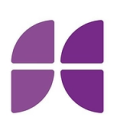“Consider this. It’s 7 a.m. in the year 2012. I’m sluggishly heading for my morning coffee when someone taps me on the shoulder. They’re from the future. In about 10 years, they whisper, you’ll be the subject of an article about running a successful ERG,” Diana Villalta said.
“I’d definitely ask for a very strong coffee — and wonder why these time travelers can’t wait until after lunch to drop these little delights.”
Villalta is U.S. tech manager for Funding Circle. She’s also a leader involved in Funding Circle’s growing number of ERGs — a group of organizations that includes Women @FC, Let’s talk about Race, Circle of Pride, FC Impact and Parents @FC. And while it might not be the time traveling fantasy that keeps Terminator movies on television and Audrey Niffenegger books on bestseller lists, the work that Villalta is doing is immensely important.
Just 10 years ago, Villalta couldn’t imagine being such a vocal champion of a more equitable workplace, preferring to advocate for her colleagues in subtle ways.
“I’ve always been a huge advocate of creating a better working environment, but I can’t say it’s ever been my passion,” she said. “Instead, I’m that person in the background who nudges you to ask for that raise or to speak up when something doesn’t feel or look right.”
Today, Villalta is an outright leader, emphasizing three essential elements she believes are crucial to managing a successful ERG: being passionate, making it fun and measuring success.
“Creating metrics around success — even if those metrics are about membership numbers or the number of sponsored events you have for the company — is important,” Villalta said. “And the numbers don’t always have to be boring; you can set goals, for example, around how much money you want to raise for programs around your community.”
Built In Colorado spoke to leaders from three forward-thinking companies employing ERGs to ensure a more just, accountable and robustly participated-in workplace. Read on to learn more about best practices, opportunities to effect change and the important progress that organizations are realizing through the ERG framework.
Granicus offers cloud-based communication and content management solutions to government institutions and establishments. The company helps more than 5,500 public sector organizations reach the people they serve.
In your experience, what is required to make an ERG program successful?
Self-direction. An ERG is about a group of employees getting together to build relationships and connections with other employees, almost always around an identity that has a specific cultural language and rhythm. As such, we want to give ERGs the space and autonomy to develop into what works for that group. How frequent are the discussions? How do they engage — or not engage — with company leaders and HR? How controversial are their topics? ERGs need the ability to decide all these questions and more in order to truly make the ERG a welcoming space for their members within the infrastructural support of their organization.
An important element to this is the ability for the ERG to decide, as much as is reasonable, what the criteria for membership are. As an example, if it’s an ERG centered around employees of color, are allies welcome? Maybe yes or maybe no, depending on the culture of the company and the experience of those employees. Regardless, the group should get to decide that on its own.
What are some common mistakes companies make when implementing ERGs?
An ERG is not a substitute for solving the very hard problems of diversity, equity, inclusion, and belonging a company faces. Too often, companies create or allow the creation of ERGs, and they don’t go through the other effort necessary to really develop the workflows, culture, channels and policies to drive change deep into the organization. And when you have folks in an ERG who are able to validate each others’ perceptions of those gaps and misses, it can create a pretty toxic feedback loop that could end up doing more harm than good for the organization.
On the other side of that coin is over-reliance on the members of an ERG to determine what changes an organization needs to make. ERG members, while they may be committed and vocal, are not HR professionals or DEI&B strategists. They should not be burdened with needing to develop policy and be the sole drivers of change. They also do not speak for all possible members of their group and should not be asked to. Framed more positively, companies should be very careful to let ERGs be about employees supporting each other — rather than a tool for the company.
An ERG is not a substitute for solving the very hard problems of diversity, equity, inclusion and belonging a company faces.”
Describe a recent event that one of your ERGs spearheaded. What was the occasion, and how did your broader team participate?
The Black Excellence ERG at Granicus is a wonderful example of an ERG that works well for its members. The leadership team does a fantastic job of bringing in topics that are of interest to the group. During Black History Month, the group used one of our CEO’s “coffee time” conversations with the company to talk about the experiences of Black employees and the work we’re continuing to do to create an even better and more inclusive culture. It was not an easy conversation. The group, including our CEO, did not shy away from some tough topics and concepts that were hard for some to hear or understand.
What was especially compelling to me, both as a Black employee and also the executive sponsor of the Black Excellence ERG, was that the ERG drove the event, the topics and even the framing in such a way that the authenticity of the conversation was visible to all. It was a great moment of mutual learning and sparked conversations and efforts that I still hear about months later.
An independent review platform open to all businesses and consumers, Trustpilot features nearly a million new reviews from around the world each month.
In your experience, what is required to make an ERG program successful?
Having a compelling mission statement and business case is the first of my three prerequisites for a successful ERG. It is essential that you explain your objective to the organization as an ERG. Ask yourself fundamental questions. Why am I here? What is my purpose? What do I wish to accomplish?
After that, you want to create positions of affiliation for other people outside of your identity group who might want to support your ERG from the position of an ally. The finest ERGs encourage partnerships between people from different cultures both inside and outside the company. They also welcome employees from all backgrounds.
Finally, a successful ERG must establish leadership support. There is a direct correlation between getting leadership support and getting support from the entire organization. Buy-in starts with leadership.
What are some common mistakes companies make when implementing ERGs?
Lack of a business case with clear objectives is a major error businesses make when implementing ERGs. As an ERG, it is crucial to communicate your mission to the organization, and that mission shouldn’t be primarily social.
If you’re creating an ERG, you need to work on your employee career trajectories as well as policies and procedures within your organization. Consider how to give your ERG group members more influence, a goal which you can’t accomplish just by going to happy hour. A social component of your ERG can be something you do once a month or even once every three months.
As an ERG, it is crucial to communicate your mission to the organization.”
Describe a recent event that one of your ERGs spearheaded. What was the occasion, and how did your broader team participate?
This year, Trustpilot Trusties in Color ERG celebrated Juneteenth with a week of in-person and virtual events. Events included author and psychologist Steven Kniffley talking about racial trauma, as well as a workforce engagement with Trustpilot’s board.
Funding Circle operates a lending platform connecting small businesses with investors in the U.S. and the UK.
In your experience, what is required to make an ERG program successful?
Passion. It turns out that having passion creates this gravitational pull. Don’t be shy about it; instead use it to gauge interest.
It only takes two people to really make a group big enough to recruit more. One of the biggest mistakes people make is thinking that the group is for you. Your passion is only the beginning. Remember to stay inclusive and open and listen to everyone around you, too.
What are some common mistakes companies make when implementing ERGs?
You have to make it fun. No one needs another meeting about strategy and problem-solving. Make it interesting by separating the meetings around goals from those where you get to know your coworkers. It can be something as simple as coffee chats, movie nights, beer or wine tasting — or even the occasional venting get-together.
Word of caution here: venting can often transform into unproductive banter, so you should always end meetings on a positive note. Present actionable takeaways even for venting because, at the end of the day, we all want to feel better, not worse, than where we started.
At the end of the day, we all want to feel better, not worse, than where we started.”
How are your team members and related ERGs celebrating Hispanic Heritage Month this year?
During September, Hispanic Heritage Month, we are sponsoring a field trip to Museo de Las Americas in Denver and to the Diego Rivera’s America exhibition at the San Francisco Museum of Modern Art. This helps us reach our goal of providing our coworkers with some activities to enrich our culture, celebrate diversity, bond over some wonderful art and get to know one another a little more.











